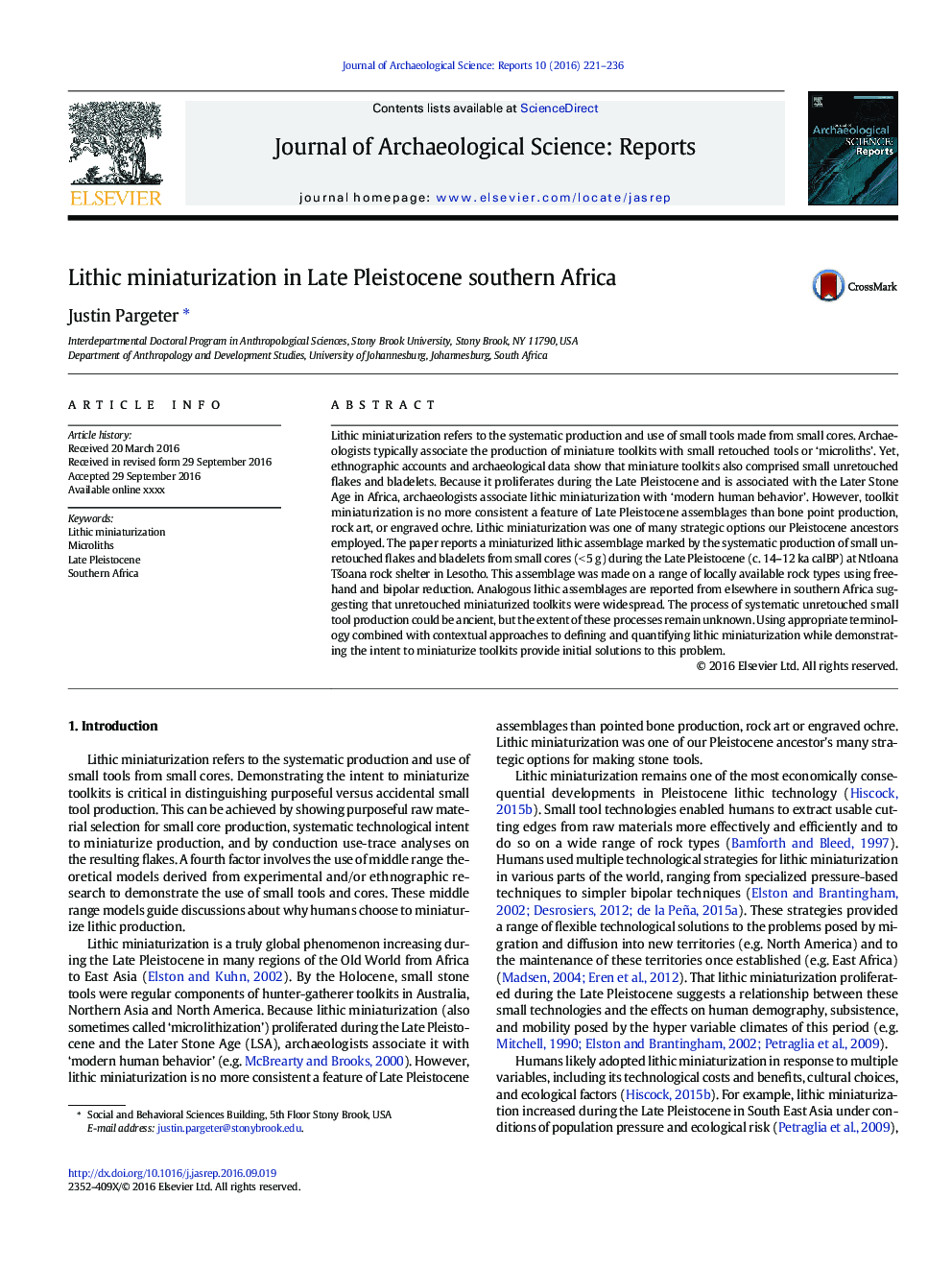| Article ID | Journal | Published Year | Pages | File Type |
|---|---|---|---|---|
| 5112238 | Journal of Archaeological Science: Reports | 2016 | 16 Pages |
Abstract
Lithic miniaturization refers to the systematic production and use of small tools made from small cores. Archaeologists typically associate the production of miniature toolkits with small retouched tools or 'microliths'. Yet, ethnographic accounts and archaeological data show that miniature toolkits also comprised small unretouched flakes and bladelets. Because it proliferates during the Late Pleistocene and is associated with the Later Stone Age in Africa, archaeologists associate lithic miniaturization with 'modern human behavior'. However, toolkit miniaturization is no more consistent a feature of Late Pleistocene assemblages than bone point production, rock art, or engraved ochre. Lithic miniaturization was one of many strategic options our Pleistocene ancestors employed. The paper reports a miniaturized lithic assemblage marked by the systematic production of small unretouched flakes and bladelets from small cores (<Â 5Â g) during the Late Pleistocene (c. 14-12Â ka calBP) at Ntloana TÅ¡oana rock shelter in Lesotho. This assemblage was made on a range of locally available rock types using freehand and bipolar reduction. Analogous lithic assemblages are reported from elsewhere in southern Africa suggesting that unretouched miniaturized toolkits were widespread. The process of systematic unretouched small tool production could be ancient, but the extent of these processes remain unknown. Using appropriate terminology combined with contextual approaches to defining and quantifying lithic miniaturization while demonstrating the intent to miniaturize toolkits provide initial solutions to this problem.
Related Topics
Social Sciences and Humanities
Arts and Humanities
History
Authors
Justin Pargeter,
